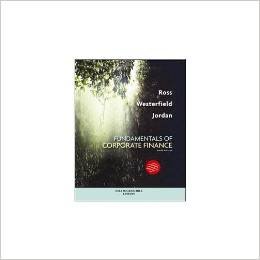
Concept explainers
To determine: Whether the policy is worth for purchasing it.
Introduction:
The
Answer to Problem 68QP
The policy is not worth for purchasing it.
Explanation of Solution
Given information:
An insurance company offers a new policy to their customers. They policy is bought by the children parents or grandparents at the time of the child’s birth. The parents can make 6 payments to the insurance company, and the six payments are as follows:
- On the 1st birthday the payment amount is $750.
- On the 2nd birthday the payment amount is $750.
- On the 3rd birthday the payment amount is $850.
- On the 4th birthday the payment amount is $850.
- On the 5th birthday the payment amount is $950.
- On the 6th birthday the payment amount is $950.
After the 6th birthday of the child, the payment is not made. At the time when the child will be 65 years, he or she will get $250,000. The interest rate for the first 6 years is 10% and for the rest of the years is 7%.
Note: From the given information, it is essential to compute the future value of the premiums for the comparisons of the promised cash payments at 65 years. Thus, it is necessary to determine the premiums value at year 6 first as the rate of interest varies at that time.
Formula to calculate the future value:
Note: PV denotes the present value, r denotes rate of discount and t denotes the number of years.
Compute the future value for the five years
Hence, the future value for the year 1 is $1,207.88.
Hence, the future value for the year 2 is $1,098.08.
Hence, the future value for the year 3 is $1,131.35.
Hence, the future value for the year 4 is $1,028.5.
Hence, the future value for the year 5 is $1,045.
Compute the value at the year 6:
Note: The value of year 6 is calculated by adding all the computed future values and the 6th year value is $950.
Hence, the value at year 6 is $6,460.81.
Compute the future value of the lump sum at the 65th birthday of the child:
Note: The number of years is 59, as only after the 6th birthday of the child the payments are not paid.
Hence, the future value of the lump sum at the 65th birthday of the child is $349,888.65.
From the above calculation of the future value, it can be stated that the policy is not worth purchasing, as the deposits value at the future is $349,888.65and the contract will pay off $250,000. The premiums amount to $99,888.65 that are more than the payoff of the policy.
Note: The present value of the two cash flows can be compared
Formula to calculate the present value of the premiums:
Compute the present value of the premiums:
Hence, the present value of the premiums is $3,646.96.
The today’s value of $250,000 at the age of 65 is as follows:
The cash flow of the premiums is still higher. At the time zero, the difference is $1,041.16
Want to see more full solutions like this?
Chapter 6 Solutions
Fundamentals Of Corporate Finance, Tenth Standard Edition
 Essentials Of InvestmentsFinanceISBN:9781260013924Author:Bodie, Zvi, Kane, Alex, MARCUS, Alan J.Publisher:Mcgraw-hill Education,
Essentials Of InvestmentsFinanceISBN:9781260013924Author:Bodie, Zvi, Kane, Alex, MARCUS, Alan J.Publisher:Mcgraw-hill Education,

 Foundations Of FinanceFinanceISBN:9780134897264Author:KEOWN, Arthur J., Martin, John D., PETTY, J. WilliamPublisher:Pearson,
Foundations Of FinanceFinanceISBN:9780134897264Author:KEOWN, Arthur J., Martin, John D., PETTY, J. WilliamPublisher:Pearson, Fundamentals of Financial Management (MindTap Cou...FinanceISBN:9781337395250Author:Eugene F. Brigham, Joel F. HoustonPublisher:Cengage Learning
Fundamentals of Financial Management (MindTap Cou...FinanceISBN:9781337395250Author:Eugene F. Brigham, Joel F. HoustonPublisher:Cengage Learning Corporate Finance (The Mcgraw-hill/Irwin Series i...FinanceISBN:9780077861759Author:Stephen A. Ross Franco Modigliani Professor of Financial Economics Professor, Randolph W Westerfield Robert R. Dockson Deans Chair in Bus. Admin., Jeffrey Jaffe, Bradford D Jordan ProfessorPublisher:McGraw-Hill Education
Corporate Finance (The Mcgraw-hill/Irwin Series i...FinanceISBN:9780077861759Author:Stephen A. Ross Franco Modigliani Professor of Financial Economics Professor, Randolph W Westerfield Robert R. Dockson Deans Chair in Bus. Admin., Jeffrey Jaffe, Bradford D Jordan ProfessorPublisher:McGraw-Hill Education





